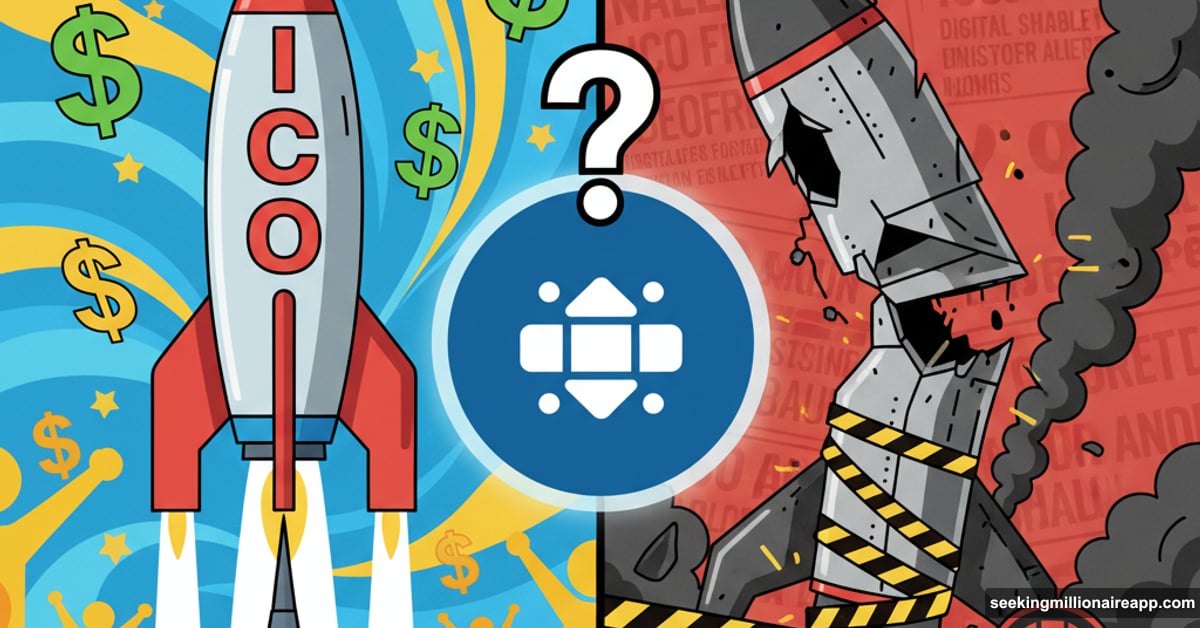The crypto exchange just announced a new token sales platform. But we’ve seen this movie before.
Coinbase is bringing back initial coin offerings for American retail investors. The move resurrects a fundraising method that collapsed spectacularly seven years ago. So naturally, questions arise about what’s different this time.
The announcement comes weeks after Coinbase acquired investment platform Echo for $375 million. That acquisition now makes more sense. Plus, the timing aligns perfectly with a crypto-friendly administration taking power in Washington.
The 2017 ICO Boom Nobody Wants to Remember
ICOs dominated crypto headlines in 2017. Ethereum finally found its killer use case. Or so everyone thought.
Thousands of projects launched token sales. Most delivered nothing but whitepapers and broken promises. Some didn’t even bother with whitepapers. The fraud became so rampant that celebrities like Kim Kardashian and Floyd Mayweather faced SEC charges for promoting dubious tokens.
The regulatory backlash hit hard. The Biden administration cracked down aggressively. Most ICO activity in the United States dried up completely.
Yet here we are again. Same structure. Different year. New promises that “this time will be different.”
Coinbase Plans to Play Gatekeeper
The exchange says it learned from 2017’s mistakes. They’re implementing requirements that should filter out the worst projects. In theory.

Projects must meet certain standards before launching token sales. Coinbase will use algorithms to distribute tokens to long-term holders rather than quick flippers. Token issuers can’t sell their allocations for six months minimum. Teams must disclose tokenomics and project details transparently.
Whether Coinbase can act as a credible neutral authority remains unclear. The exchange previously accepted tokens from projects for its Coinbase Earn program. Users received free tokens for reading promotional content about those same projects. That’s essentially paid marketing disguised as education.
Moreover, Coinbase tried operating under its own listing standards before. The SEC under Gary Gensler viewed nearly everything except Bitcoin as a security. That led to enforcement action against Coinbase. The case has since been dropped. But it exposed the fundamental tension in crypto regulation.
Congress Might Pass Standards. Probably Not Soon
The crypto industry expects Congress to pass the Clarity Act. That legislation would establish regulatory standards for digital assets. But don’t hold your breath.
Prediction market Polymarket shows odds of passage this year dropped from 87% to just 21% since July. So Coinbase is moving forward without waiting for clear regulatory guidelines.
That’s a risky bet. What happens if new regulations conflict with Coinbase’s platform structure? Companies that move fast in regulatory gray zones sometimes regret it later.
Crypto Looks More Like Traditional Finance Every Day
This development highlights how far crypto has drifted from its origins. Satoshi Nakamoto created Bitcoin specifically to avoid the trust requirements of traditional finance. Yet here’s Coinbase building a centralized investment platform that operates on USDC stablecoin rails.
The structure now resembles traditional IPOs more than revolutionary decentralized finance. Coinbase acts as gatekeeper. The platform uses dollar-based stablecoins. Projects increasingly function like standard fintech companies rather than truly decentralized protocols.
So crypto has become what it supposedly aimed to replace. A centralized financial institution controls access. Gatekeepers decide which projects get approved. Users trust intermediaries to protect them from fraud.

The Real Question Nobody’s Asking
Why do retail investors need access to early-stage token sales? Most ICO participants in 2017 lost money. Professional venture capital funds have resources to evaluate projects properly. Retail investors typically don’t.
Giving regular people access to high-risk investments sounds democratic. But it often just means giving them more ways to lose money. The 2017 ICO crash proved that decisively.
Yet Coinbase is betting that retail demand exists. They’re probably right. People want access to potential 100x gains. The fact that most projects fail doesn’t dampen enthusiasm. Human nature hasn’t changed since 2017.
The exchange will profit either way. They collect fees on token sales. They earn trading commissions when tokens list. Whether investors make or lose money matters less to their bottom line.
History Tends to Repeat Itself
Maybe Coinbase’s safeguards will prevent another 2017-style disaster. Maybe algorithmic distribution and six-month lockups will actually work. Maybe.
But the fundamental dynamics haven’t changed. Projects still need funding. Retail investors still chase quick profits. Exchanges still profit from facilitating transactions. Those incentives created the 2017 bubble. They’re creating another one now.
The difference this time? A more crypto-friendly regulatory environment means fewer guardrails. That could mean innovation flourishes. Or it could mean we’re about to watch the same disaster unfold again.
Smart money stays cautious. Remember what happened last time before jumping into new token sales. Some lessons are worth learning only once.
